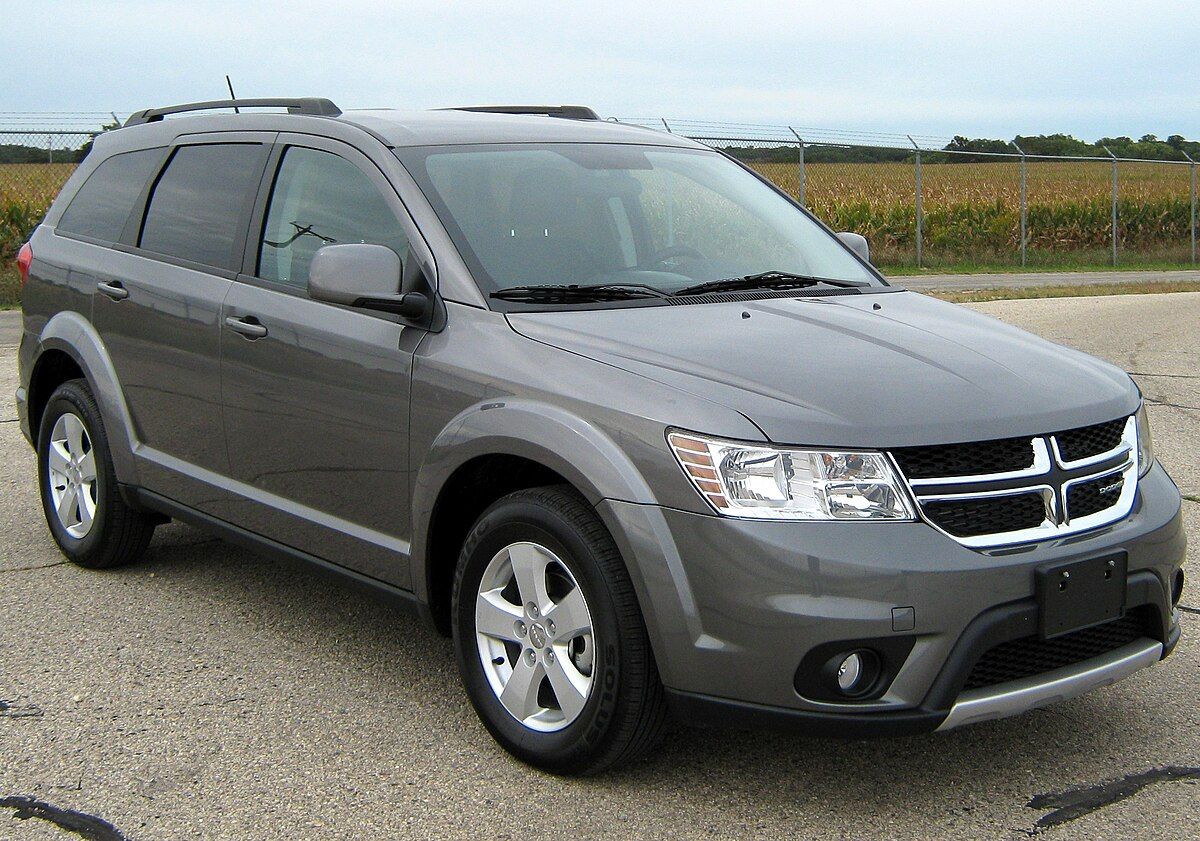
Let’s face it, there’s a special kind of thrill that comes with buying a new car. The scent of a fresh interior, the promise of new adventures, the sheer excitement of driving off the lot – it’s a moment many of us cherish. But sometimes, that initial euphoria quickly fades, replaced by a sinking feeling of dread and, yes, a hefty dose of buyer’s remorse. Vehicle manufacturers roll out cars that look promising and grab our attention, but often, they simply don’t live up to the hype, leaving owners frustrated and out of pocket.
Considering how much new and used cars go for these days, you really need to know what you’re getting into before you sign on the dotted line. Making a buying decision based solely on the exterior aesthetics and a quick glance at the specs can get you into deep trouble. Nobody wants to spend tens of thousands of dollars, or commit to a multi-year car loan, only to discover they’ve made a costly mistake. That’s why learning from other vehicle owners’ experiences, especially their regrets, is one of the smartest ways to make better choices for your own driveway.
So, if you’re thinking of buying a new ride or simply curious about which cars have consistently let their owners down, you’ve come to the right place. We’re taking a deep dive into some of the most notorious offenders – vehicles that promised much but delivered little, leaving a trail of disappointed drivers in their wake. Here are the first six vehicles that owners wish they had never purchased, unveiling the common pitfalls and persistent problems that turned their dream cars into daily nightmares. Prepare to get informed, and perhaps, a little surprised.
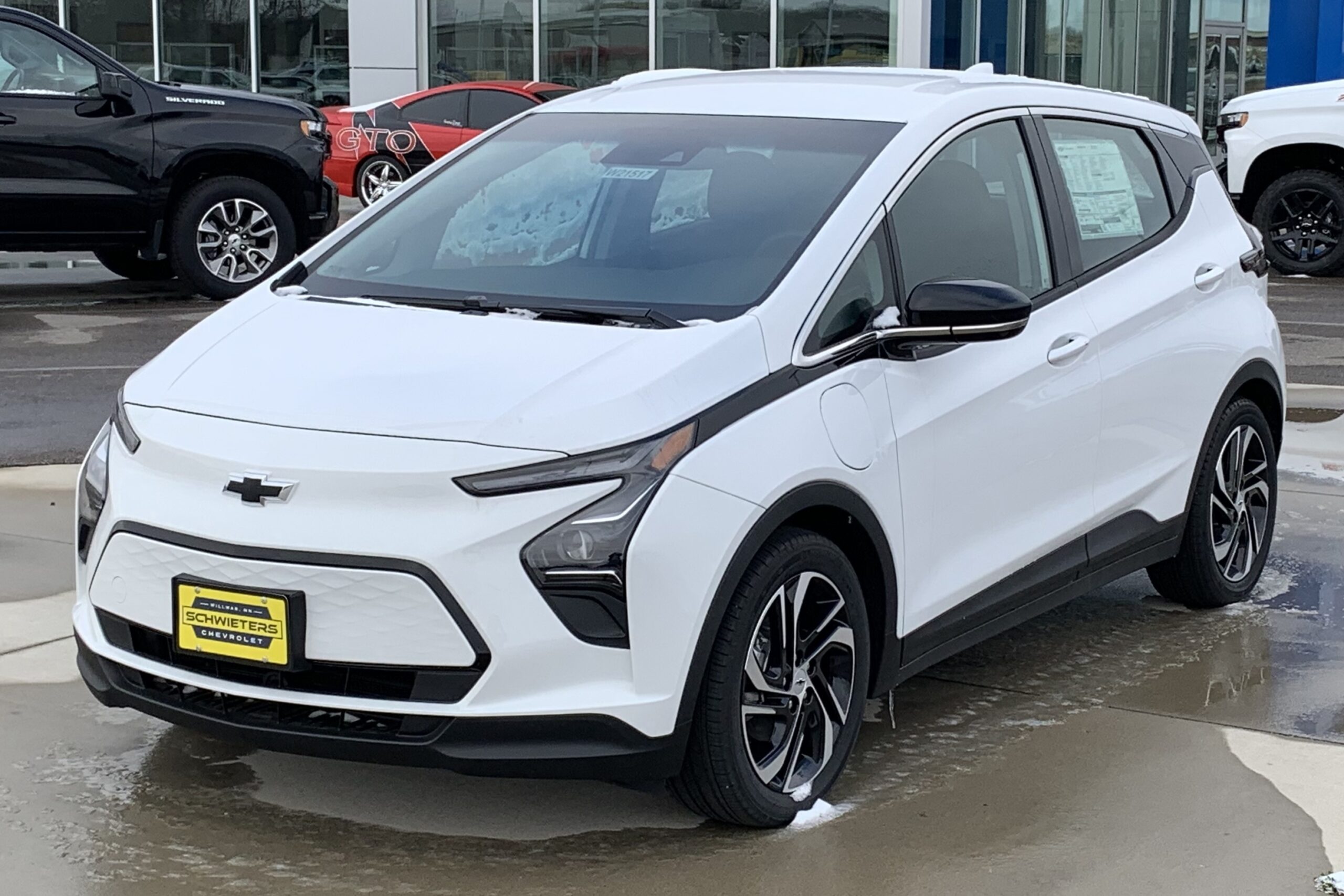
1. **Chevrolet Bolt**General Motors’ Chevrolet Bolt stepped onto the scene with a lot of promise, earning praise for its affordability and a respectable range that made it an attractive option for many seeking an entry into the electric vehicle market. However, behind that initial appeal, the Bolt quickly became plagued with a series of problems that overshadowed its advantages, turning many owners’ excitement into outright frustration. It’s a classic case of a car that looks good on paper but falters in real-world reliability.
The most infamous and concerning issue to hit the Bolt was undoubtedly its battery-related fires. Imagine the stress of knowing your car’s core component could short-circuit, overheat, and even ignite into flames. This severe problem, stemming from lithium-ion batteries made by LG, led to extensive and costly recalls in both 2020 and 2021, forcing GM to address a fundamental flaw that deeply shook consumer confidence in the vehicle. It was a serious safety concern that no driver wants to contend with.
Beyond the headline-grabbing battery issues, the Bolt suffered from several other less dramatic but equally irritating drawbacks. Owners frequently reported that the ride quality was merely “so-so,” lacking the smoothness and comfort expected from a modern vehicle. Furthermore, space for rear passengers was often deemed inadequate, making longer journeys or even short trips with a full car feel cramped and uncomfortable, detracting from its practicality as a daily driver.
The handling, while passable, also fell into the “so-so” category, meaning it didn’t offer an engaging or particularly responsive driving experience. These factors combined to make the Bolt a rather uninspired choice for many, especially when other EVs in the rapidly expanding market began to offer superior comfort and driving dynamics. Its modest range of 259 miles per charge further limited its appeal, essentially confining its optimal use to city driving and shorter commutes.
In fact, due to significant reliability concerns, the Chevrolet Bolt was eventually removed from Consumer Reports’ recommendation list, a clear indicator of its struggles. As Chevrolet continues to establish its presence in the competitive EV segment, many experts suggest that opting for a brand with a more proven track record in electric vehicle reliability might be a wiser choice for those looking to avoid similar headaches. It’s a cautionary tale about the early challenges of new automotive technologies.
Car Model Information: 2022 Chevrolet Bolt EUV FWD LT
Name: Chevrolet Bolt EV
Caption: 2022 Chevrolet Bolt EV
Manufacturer: General Motors
Production: unbulleted list
ModelYears: unbulleted list
Class: Subcompact car
BodyStyle: hatchback
Layout: Front-engine, front-wheel-drive layout
Predecessor: Chevrolet Spark EV
Categories: 2020s cars, All Wikipedia articles in need of updating, All articles containing potentially dated statements, All articles with unsourced statements, Articles containing potentially dated statements from February 2018
Summary: The Chevrolet Bolt EV (marketed in Europe as Opel Ampera-e) is a battery electric subcompact hatchback manufactured and marketed by General Motors under its Chevrolet brand from late 2016 until late 2023, with a brief hiatus between mid-2021 and early 2022.
The first-generation Bolt was developed and manufactured with LG Corporation. Sales of the 2017 Bolt began in California in December 2016; it was released nationwide and international markets release in 2017. A rebadged European variant was marketed as the Opel Ampera-e in mainland Europe. In 2017, the Bolt was the second-best-selling plug-in car in the United States. It was named the 2017 Motor Trend Car of the Year, the 2017 North American Car of the Year, an Automobile magazine 2017 All Star, and was listed in Time magazine’s Best 25 Inventions of 2016. The Ampera-e was discontinued after 2018. By the end of 2020, GM had sold 112,000 Bolt and Ampera-e cars worldwide. The first-generation Bolt had been subject to at least three recalls due to battery fire risks.
In mid-2023, GM officials said they would discontinue the Bolt; after outcry, they announced plans for a next-generation model, which is expected to be revealed in 2025 for model year 2026.
Get more information about: Chevrolet Bolt
Buying a high-performing used car >>>
Brand: Chevrolet Model: Bolt
Price: $22,995 Mileage: 30,332 mi.
Read more about: Steer Clear: 15 Vehicles Drivers Have Regretted Purchasing Most
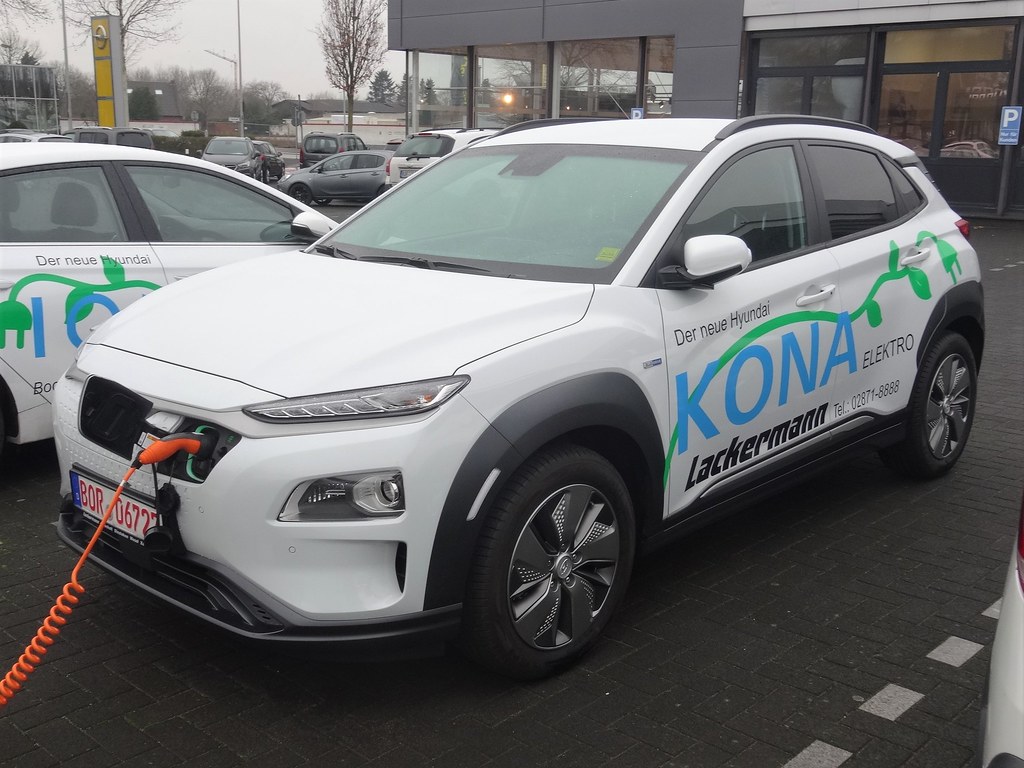
2. **Hyundai Kona Electric**Hyundai has certainly been on an impressive roll lately, consistently rolling out interesting and well-received electric vehicles that have captured the attention of drivers worldwide. Their recent offerings have showcased innovation and reliability, building a solid reputation in the rapidly evolving EV market. However, even the best carmakers can hit a speed bump, and for Hyundai, the Kona Electric has unfortunately emerged as one of their notable “clunkers.”
Exhibit A in the case of Hyundai’s less-than-stellar EVs is undeniably the Kona Electric. Much like its Chevrolet counterpart, this model’s history is marred by its own share of battery fires and subsequent recalls. The severity of the fire risks prompted Hyundai to issue a worldwide recall in both 2020 and 2021, undertaking the substantial task of replacing battery packs in affected vehicles to nip the problem in the bud. It’s a stark reminder that even innovative electric vehicles can come with serious hidden risks.
But here’s the kicker: the battery issues, while alarming, were often just the tip of the iceberg for many Kona Electric owners. The context suggests that while these fires were the most dramatic problems, they weren’t the only ones plaguing the vehicle. Owners frequently encountered a host of other troubles, implying that the car’s overall reliability and user experience left much to be desired beyond its power source.
The information available on the Hyundai Kona Electric hints at a broader pattern of dissatisfaction among owners, suggesting that the vehicle’s drawbacks extended beyond the critical battery problem. For potential buyers, this implies that even after the battery recalls, the Kona Electric might still present other challenges that contribute to buyer’s remorse. The clear takeaway message from those who’ve experienced its quirks is a resounding, “Buyer beware!”
It’s a powerful lesson that even from a reputable brand, not all electric vehicles are created equal, and some pioneering models carry significant risks. The Kona Electric serves as a strong reminder that meticulous research into long-term ownership experiences and known issues is absolutely critical before committing to any new car, especially in an emerging segment like EVs where technology is still rapidly evolving and sometimes, teething problems are more severe.
Car Model Information: 2022 Volkswagen Atlas 2.0T SE
Name: Hyundai Kona
Caption: Hyundai Kona N Line (SX2)
Manufacturer: Hyundai Motor Company
Aka: Hyundai Kauai (Portugal)
Production: 2017–present
ModelYears: 2018–present
Class: Subcompact crossover SUV
BodyStyle: SUV
Layout: ubl
Categories: 2020s cars, All-wheel-drive vehicles, All Wikipedia articles in need of updating, Articles containing Chinese-language text, Articles containing Korean-language text
Summary: The Hyundai Kona is a subcompact crossover SUV produced by the South Korean manufacturer Hyundai. The first-generation Kona debuted in June 2017 and the production version was revealed later that year. It is positioned between the Venue or Bayon and the Tucson in Hyundai crossover SUV line-up. The battery electric version called the Kona Electric (or Kona EV) was first launched in South Korea during the first half of 2018 and rolled out gradually worldwide afterwards.
Get more information about: Hyundai Kona
Buying a high-performing used car >>>
Brand: Hyundai Model: Kona Electric
Price: $21,999 Mileage: 44,961 mi.
Read more about: 10 SUVs That Hit 40 MPG Highway—And They’re Not Even Hybrids

3. **Jeep Compass**The Jeep brand evokes images of rugged adventure, off-road capability, and a certain kind of freedom. So, it might come as a surprise to many that a vehicle bearing the iconic Jeep badge could land on a list of cars owners regret buying. Yet, the compact SUV known as the Jeep Compass has, over various model years, accumulated a rather serious set of issues that have left many drivers with what they describe as a “migraine headache on wheels.” For those dreaming of a dependable SUV, the Compass often proves to be a significant disappointment.
One of the most persistent and frustrating complaints among Jeep Compass owners revolves around its transmissions. Whether it’s the continuously variable transmission (CVT) or the 9-speed automatic, drivers frequently report “herky-jerky shifting” and, in far too many cases, “catastrophic failure.” Imagine navigating daily traffic or cruising on the highway, only for your transmission to behave unpredictably or, worse, completely give out. This kind of unreliability is simply unacceptable for a modern vehicle.
But the transmission woes aren’t where the problems end. Owners also grapple with a range of other performance-sapping issues, including “poor engine performance” that makes acceleration feel sluggish and unresponsive. “Excessive oil consumption” becomes another recurring headache, leading to frequent top-offs and concerns about the engine’s long-term health. Add to that persistent “electrical system issues,” and you have a recipe for ongoing, costly repairs.
Beyond the mechanical and electrical troubles, the Jeep Compass falls short in basic comfort and user experience, further fueling buyer’s remorse. Owners have highlighted “issues with the driver seat,” making it difficult to find a comfortable position for even moderate drives. “Indicator visibility” has also been a point of contention, suggesting design flaws that impact safety and ease of use. Overall, the vehicle often provides “lower comfort than many other vehicles” in its class.
Perhaps the most damning critique for a vehicle carrying the Jeep name is its perceived lack of power. With “so little horsepower,” many enthusiasts find it tough to genuinely consider the Compass a “real Jeep.” It struggles to deliver the robust performance and rugged feel that the brand is celebrated for, leaving owners feeling misled about its capabilities. For those seeking true Jeep spirit, the Compass often leaves them wanting.
Car Model Information: 2017 Jeep Wrangler Unlimited Sport
Name: Jeep Compass
Caption: 2019 Jeep Compass
Manufacturer: Jeep
Production: 2006–present
ModelYears: 2007–present
Class: Compact crossover SUV
BodyStyle: SUV
Layout: Front-engine, front-wheel-drive layout
Chassis: Unibody
Categories: 2010s cars, 2020s cars, All-wheel-drive vehicles, All Wikipedia articles written in American English, Articles with short description
Summary: The Jeep Compass is a compact crossover SUV, introduced in 2006 for the 2007 model year. The first generation Compass and Patriot, its rebadged variant, were among Jeep’s first crossover SUVs. The second-generation Compass debuted in September 2016 in Brazil and at the Los Angeles International Auto Show in November 2016, sharing a modified platform with the Renegade. It is positioned between the smaller Renegade and the larger Cherokee globally or the Commander in South America. The third-generation Compass debuted in May 2025, built on the STLA Medium by Stellantis, shared with other PSA Groupe vehicles.
Get more information about: Jeep Compass
Buying a high-performing used car >>>
Brand: Jeep Model: Compass
Price: $20,725 Mileage: 111,103 mi.
Read more about: Beyond the Showroom Shine: 10 SUVs That Either Defy or Succumb to Rust, A Crucial Guide for Drivers

4. **Dodge Dart**The Dodge Dart, initially positioned as a compact sedan, quickly earned a reputation for having what owners affectionately (or perhaps, sarcastically) called “full-size car problems.” It seemed to combine all the disadvantages of a smaller vehicle with the frustrating reliability issues typically associated with larger, more complex machines. The list of complaints from owners is extensive, leading many to wish they had simply never brought this particular model home.
Where do we even begin with the Dart? It appears that almost every major system within the car was prone to trouble. From the “transmission to the engine and from the suspension to the brakes,” the Dodge Dart was a vehicle that consistently underperformed and caused headaches for its drivers. This widespread unreliability across critical components paints a clear picture of a car that simply wasn’t built to last, or even to function smoothly.
This pervasive dissatisfaction isn’t just anecdotal; it’s backed up by hard data. According to Consumer Reports, a staggering “around six in 10 buyers say they are not satisfied with the vehicle.” Imagine that – over half of the people who purchased a Dodge Dart openly expressed regret. That’s a significant indicator of widespread disappointment and a clear warning sign for anyone considering this model.
Specific complaints include “sluggish acceleration,” making merging onto highways or even simply pulling away from a stoplight a nerve-wracking experience. Drivers also found “difficulty in finding a comfortable seated position,” which can turn any journey into an uncomfortable chore. These ergonomic shortcomings compound the driving frustrations, making the Dart a genuinely unpleasant vehicle to spend time in for many owners.
And as if that weren’t enough, one particular comfort issue stands out as a genuine problem: “a poor AC system.” In many climates, a reliable air conditioning system isn’t a luxury; it’s a necessity. A faulty AC can make hot summer drives unbearable, adding another layer of misery to an already problematic ownership experience. It’s easy to see why “over fifty percent of purchases said they weren’t happy after buying this” car.
Car Model Information: 2013 Dodge Dart Limited/GT
Name: Dodge Dart
Caption: 1966 Dodge Dart GT 2-door hardtop
Manufacturer: Dodge
Production: 1959–1976 (US market)
ModelYears: 1960–1976 (US market)
Class: Full-size
Layout: FR layout
Predecessor: Dodge Coronet#Fourth generation (1957–1959)
Related: Plymouth Valiant,Chrysler Valiant,Dodge Phoenix
Successor: Dodge Aspen,Dodge Diplomat,Talbot Tagora
Categories: 1970s cars, All articles with unsourced statements, Articles with short description, Articles with unsourced statements from December 2023, Articles with unsourced statements from May 2025
Summary: The Dodge Dart is a line of passenger cars produced by Dodge from the 1959 to 1976 model years in North America, with production extended to later years in various other markets.
The production Dodge Dart was introduced as a lower-priced full-size model in 1960 and 1961, but became a mid-size car for one model year for 1962, and was then reduced to a compact for two generations, from 1963 to 1976.
Chrysler had first used ‘Dart’ name plates on two Italian styled show cars, in 1956 and 1957, before it became a Dodge model name. The Dart nameplate was resurrected for a Fiat-derived compact car that was introduced in 2012.
Get more information about: Dodge Dart
Buying a high-performing used car >>>
Brand: Dodge Model: Dart
Price: $6,971 Mileage: 123,411 mi.
Read more about: Steer Clear: 15 Vehicles Drivers Have Regretted Purchasing Most
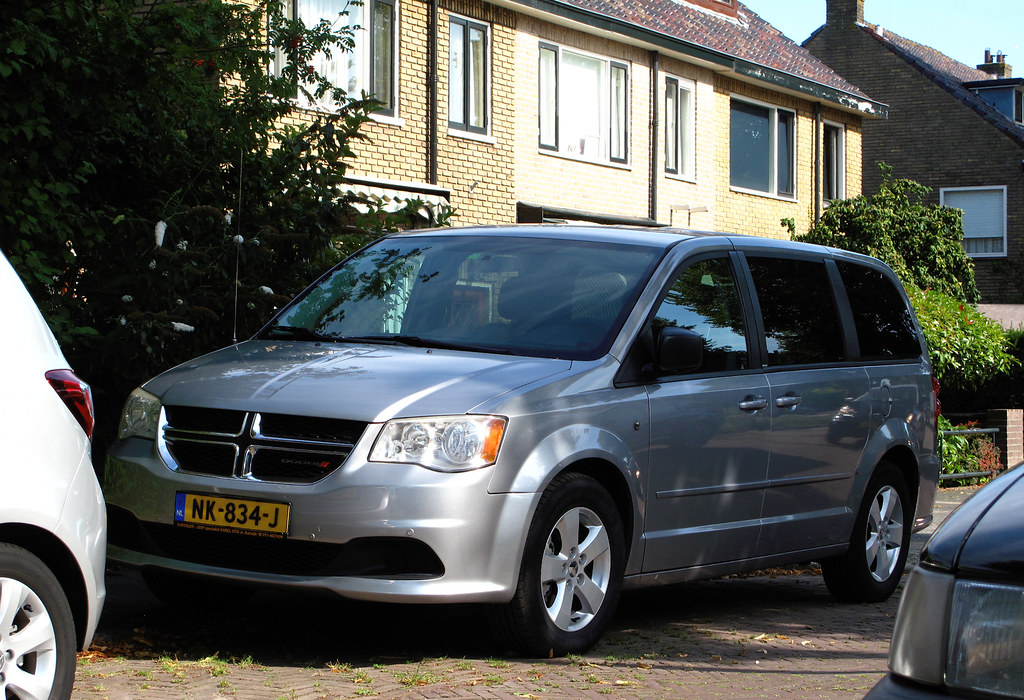
5. **Dodge Grand Caravan**For many families across generations, the Dodge Grand Caravan holds a unique place in their memories. It was, for a long time, the quintessential family hauler, witnessing countless road trips, school runs, and grocery store excursions. However, while some of those memories might be fond, many others are tinted with the reality that these minivans were “anything but smooth driving,” often proving to be a source of significant mechanical headaches and constant worry for their owners.
At the heart of the Grand Caravan’s troubles was its notoriously unreliable transmission. It’s incredibly challenging to rely on a vehicle designed for hauling family, pets, and cargo when “transmission failure is a common complaint from owners.” This isn’t just about minor inconveniences; it’s about a fundamental component failing, often at the most inconvenient times. Such a critical flaw undermines the very purpose of a family vehicle meant for dependable transport.
Before these transmissions would ultimately “go kaput,” they would often display a series of alarming symptoms. Owners frequently reported “delayed gear engagement,” creating hesitant and sometimes dangerous acceleration. “Rough shifting” would make every gear change a jolt, detracting significantly from ride comfort. And then there was the unsettling sensation of “slipping,” where the transmission seemed to lose its grip, struggling to transfer power effectively. These are not the signs of a healthy powertrain.
Beyond the transmission, Dodge Grand Caravan owners also grappled with a host of other frustrating issues. “Electrical system problems” were a frequent grievance, leading to erratic behavior from various components and sometimes costly diagnostic trips. “Heavy oil consumption” was another recurring complaint, forcing owners to regularly check and top off fluids, adding to the vehicle’s running costs and maintenance demands. It often felt like one problem followed another.
The regret among owners was palpable. Many expressed that “if they could rewind time and have a do-over, they would gladly choose something else.” Despite its often “lower price tag than other vehicles,” the reason for this affordability became painfully clear once drivers experienced its shortcomings. Factors like “uncomfortable second-row seats,” a “horrible sound system,” and “cheap upholstery” that wouldn’t last under “mild wear and tear” further solidified their remorse.
Car Model Information: 2022 Volkswagen Atlas 2.0T SE
Caption: 2011 Dodge Grand Caravan Mainstreet
Name: Dodge Grand Caravan
Manufacturer: Chrysler Corporation,Daimler AG,Chrysler LLC,Chrysler Group LLC,FCA US LLC
Class: Minivan
Layout: FF layout,F4 layout
Production: November 2, 1983 –August 21, 2020
ModelYears: 1984–2020
Related: Plymouth Voyager,Chrysler Town & Country (minivan),Dodge Mini Ram,Chrysler Voyager,Volkswagen Routan
Assembly: Windsor, Ontario,Fenton, Missouri,Fenton, Missouri,Fuzhou
Successor: Dodge Journey,Chrysler Voyager
Categories: All-wheel-drive vehicles, All articles with unsourced statements, Articles with short description, Articles with unsourced statements from December 2017, Articles with unsourced statements from May 2009
Summary: The Dodge Caravan is a series of minivans manufactured by Chrysler from the 1984 through 2020 model years. The Dodge version of the Chrysler minivans, was marketed as both a passenger van and a cargo van (the only version of the model line offered in the latter configuration). For 1987, the model line was joined by the long-wheelbase Dodge Grand Caravan. Produced in five generations across 36 model years, the Dodge Caravan is the second longest-lived Dodge nameplate (exceeded only by the Dodge Charger). Initially marketed as the Dodge counterpart of the Plymouth Voyager, the Caravan was later slotted between the Voyager and the Chrysler Town & Country. Following the demise of Plymouth, the model line became the lowest-price Chrysler minivan, ultimately slotted below the Chrysler Pacifica.
Sold primarily in the United States and Canada, the Dodge Caravan was also marketed in Europe and other international markets under the Chrysler brand (as the Chrysler Voyager or Chrysler Caravan). From 2008 onward, Dodge marketed the model line only as the Grand Caravan; Ram Trucks sold a cargo-only version of the model line as the Ram C/V Tradesman. The model line was also rebranded as the Volkswagen Routan from 2009 through 2014.
After the 2020 model year, the Dodge Grand Caravan was discontinued, ending production on August 21, 2020. For 2021 production, the Grand Caravan nameplate was moved to Chrysler, which used it for a Canadian-market version of the Chrysler Pacifica (in the United States, the exact vehicle was marketed as the Chrysler Voyager).
For its entire production run, the Dodge Caravan/Grand Caravan was manufactured by Chrysler Canada (now Stellantis Canada) at its Windsor Assembly facility (Windsor, Ontario). From 1987 until 2007, the model line was also manufactured by Chrysler at its Saint Louis Assembly facility (Fenton, Missouri). Since their introduction in late 1983, over 14.6 million Chrysler minivans have been sold worldwide (including export versions and versions sold through rebranding).
Get more information about: Dodge Caravan
Buying a high-performing used car >>>
Brand: Dodge Model: Grand Caravan
Price: $21,999 Mileage: 44,961 mi.
Read more about: Steer Clear: 15 Vehicles Drivers Have Regretted Purchasing Most

6. **Nissan Sentra**Like many vehicles, the Nissan Sentra has seen its fair share of model years, some of which were perfectly adequate, if unremarkable. However, a specific stretch of production years — from 2013 to 2019 — proved to be particularly “horrific” for many owners, turning what should have been a reliable compact car into a perennial source of frustration. For anyone considering a used Sentra, these are the model years to “stay away from” if you want to avoid a world of trouble.
The primary culprit behind the Sentra’s widespread dissatisfaction during these years was its infamous continuously variable transmission (CVT). This particular transmission technology has been a “thorn in the side of many Sentra owners,” leading to a litany of complaints that range from mere annoyance to significant mechanical failure. The CVT, intended to offer smooth acceleration and better fuel economy, often did the exact opposite for these specific models.
Owners reported a range of distinct CVT problems, including frequent “overheating,” which could lead to significant damage and costly repairs. The driving experience was often marred by “jerky acceleration,” making the car feel inconsistent and unresponsive, far from the smooth ride a CVT promises. Furthermore, an unsettling “shuddering” sensation would often accompany acceleration, adding to the overall feeling of mechanical distress and unreliability.
As if the transmission issues weren’t enough, the Nissan Sentra also presented a “laundry list of issues” that extended to the engine itself, including alarming instances of “engine stalling.” This, combined with “many recalls related to the vehicle’s airbags, seatbelts, brakes, and more,” painted a picture of a car with fundamental design and manufacturing flaws across multiple critical systems. It was a vehicle that simply couldn’t be trusted.
In all seriousness, the Nissan Sentra from these problematic years is “not the type of car one would find remarkable.” While it may be “serviceable at best” and has historically sold well, this often “has more to do with the utilitarian nature of most cars” rather than any outstanding qualities. Ultimately, while it might not be “the worst car in the world,” it’s certainly “nothing special” and often a source of deep regret for those who invested in it.
Car Model Information: 2018 Nissan Sentra SV
Name: Nissan Sentra
Caption: 2021 Nissan Sentra SR (B18; Canada)
Manufacturer: Nissan
Aka: Nissan Sunny
Production: 1982–present
Class: Subcompact car
Predecessor: Nissan Sunny#B310
Categories: 1990s cars, 2000s cars, 2010s cars, 2020s cars, All Wikipedia articles written in American English
Summary: The Nissan Sentra is a series of automobiles manufactured by the Japanese automaker Nissan since 1982. Since 1999, the Sentra has been categorized as a compact car, while previously it occupied the subcompact class. Until 2006, Sentra was a rebadged export version of the Japanese Nissan Sunny, but since the 2013 model year, Sentra is a rebadged export version of the Sylphy. The Sentra nameplate is not used in Japan. Many other countries in Latin America sell their versions of the Sunny as the Sentra. In Mexico, the first three generations of the Sentra were known as the Nissan Tsuru (Japanese for crane), and the B13 model was sold under that name until 2017, alongside the updated models badged as Sentra.
In North America, the Sentra currently serves as Nissan’s compact car, despite being rated as a mid-size car by the EPA due to its interior volume since the 2007 model year. While previous Sentras were subcompacts, the Sentra has grown over the years, with the Nissan Versa having replaced the Sentra in the entry-level area.
The Sentra name was created for Nissan by Ira Bachrach of NameLab, and Bachrach describes the origin as “Nissan wanted consumers to understand that it was quite safe even though it was small. The word Sentra sounds like central as well as sentry, which evokes images of safety.”
Get more information about: Nissan Sentra
Buying a high-performing used car >>>
Brand: Nissan Model: Sentra
Price: $9,987 Mileage: 73,999 mi.
Read more about: Steer Clear: 15 Vehicles Drivers Have Regretted Purchasing Most
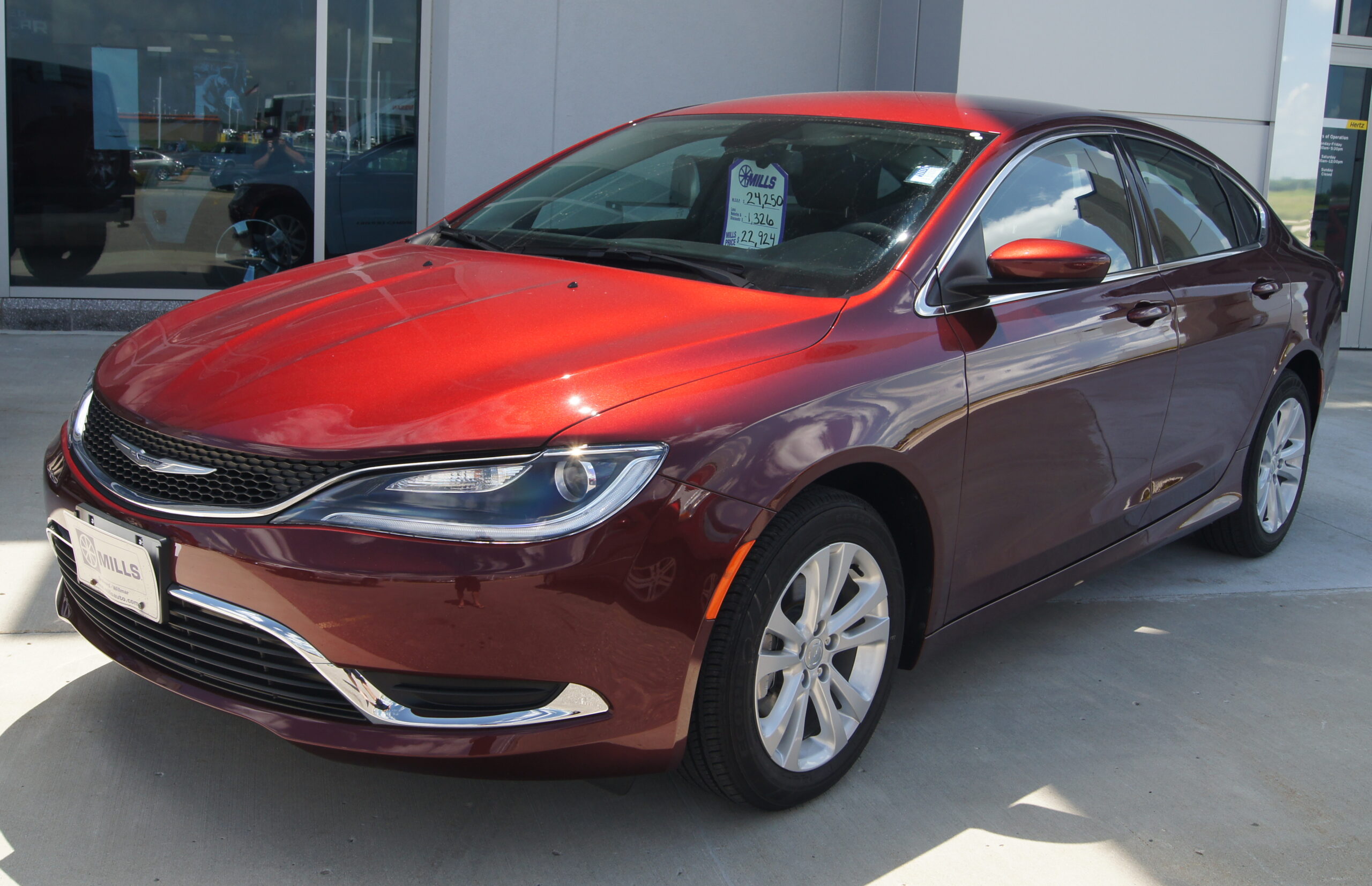
7. **Chrysler 200**Alright, let’s talk about the Chrysler 200, a car that, despite its attempts at a modern facelift, often left drivers feeling like they’d stepped back in time – and not in a good, retro-chic way. Manufactured between 2011 and 2017, this sedan promised contemporary design, but underneath, it was practically a masterclass in how *not* to build a reliable vehicle. Owners quickly discovered a whole host of issues, turning everyday commutes into a test of patience.
One of the biggest culprits, especially in the 2015, 2016, and 2017 models, was the notorious 9-speed automatic transmission. Imagine driving, and your car’s transmission decides to throw a party of “problematic” shifts, sometimes even calling it quits altogether. This wasn’t just an inconvenience; transmission failure became a very real concern for many, translating into costly repair bills. As if that wasn’t enough, engine performance problems added another layer of frustration, leaving drivers wanting more power and reliability.
Beyond the powertrain, the Chrysler 200 also developed a reputation for clumsy handling and a base four-cylinder engine that simply didn’t cut it, contributing to a “severely outdated” driving experience. Owners frequently complained about excessive road noise, turning conversations into shouting matches, and a rough ride that amplified every bump. Even the cruise control system proved to be less than reliable, adding another frustrating glitch to an already long list of disappointments that made owners deeply regret their purchase.
Car Model Information: 2015 Chrysler 200 S
Name: Chrysler 200
Manufacturer: Chrysler
Production: 2010–2016
ModelYears: 2011–2017
Assembly: Sterling Heights, Michigan
Class: Mid-size car
Sp: us
Predecessor: Chrysler Sebring
Categories: 2010s cars, All articles with dead external links, All articles with unsourced statements, Articles with dead external links from July 2020, Articles with permanently dead external links
Summary: The Chrysler 200 is a mid-size sedan that was manufactured and marketed by Chrysler from model years 2011 to 2017 across two generations in four-door sedan and two-door convertible (first generation only) body styles.
The 200 nameplate debuted on the 200C, a prototype hybrid vehicle shown at the 2009 North American International Auto Show in Detroit and based on the Chrysler 300. The 200C concept was engineered to accept either traditional gasoline, hybrid or full-electric powertrains.
Get more information about: Chrysler 200
Buying a high-performing used car >>>
Brand: Chrysler Model: 200
Price: $6,900 Mileage: 122,275 mi.
Read more about: Conquer the Open Road: 13 Hybrid Vehicles Delivering Over 600 Miles of Range for Unmatched Freedom

8. **Nissan Altima**Ah, the Nissan Altima. For years, it’s been a staple on roads everywhere, but many drivers who’ve opted for one have ended up with a severe case of buyer’s remorse. Much like its Sentra sibling, the Altima’s journey from potential dream car to daily headache often begins and ends with its Continuously Variable Transmission (CVT). If you’ve ever had a car with a finicky CVT, you know the struggle is real – and the Altima’s version, particularly in the 2013 to 2019 model years, was a true legend of frustration.
This problematic transmission wasn’t just a minor annoyance; it was the source of a litany of complaints, including a distinct droning noise during acceleration that could grate on anyone’s nerves. Beyond the auditory assault, the CVT was often associated with sluggishness and a general lack of responsiveness. But the Altima’s issues didn’t stop there; owners frequently encountered problems with the steering, excessive oil consumption, and oil leaks, forcing more frequent maintenance.
Safety and comfort didn’t escape criticism either. The Altima’s braking performance consistently underperformed in testing, requiring longer stopping distances than many competitors. Inside, the infotainment system often felt dated and unresponsive, while sensor malfunctions, non-responsive ignitions, and even a faulty AC system added to the electronic headaches. These recurring “quality-of-life issues” often chipped away at owner satisfaction, proving that seemingly minor problems can add up to a major disappointment.
Car Model Information: 2023 Nissan Altima SR FWD
Name: Nissan Altima
Caption: 2024 Nissan Altima SR (L34; US)
Manufacturer: Nissan
Aka: Nissan Bluebird
Production: 1992–present
Class: Compact car
Predecessor: Nissan Bluebird,Nissan Stanza
ModelYears: 1993–present
Categories: 2000s cars, 2010s cars, 2020s cars, All-wheel-drive vehicles, All Wikipedia articles written in American English
Summary: The Nissan Altima is a mid-size car manufactured by Nissan since 1992. It is a continuation of the Nissan Bluebird line, which began in 1955.
The Altima has historically been larger, more powerful, and more luxurious than the Nissan Sentra but less so than the Nissan Maxima. The first through fourth-generation cars were manufactured exclusively in the United States and officially sold in North and South America, along with the Middle East and Australia. For other markets, Nissan sold a related mid-size sedan called the Nissan Teana which was between the Altima and Maxima in terms of size. In 2013, the Teana became a rebadged version of the fifth-generation Altima.
The name “Altima” was originally applied to a top trim line of the Nissan Leopard for the Japanese market in 1986, and then to the Nissan Laurel Altima mid-size car sold in Central America and the Caribbean before 1992. In 1992, Nissan discontinued the Stanza which was a Nissan Bluebird clone, replacing it with the US-built Altima, while remaining a compact car. The first Altima was produced in June 1992, as a 1993 model. All Altima models for the North American market were built in Smyrna, Tennessee, until June 2004, when Nissan’s Canton, Mississippi plant also began producing the model to meet high demand.
Get more information about: Nissan Altima
Buying a high-performing used car >>>
Brand: Nissan Model: Altima
Price: $19,950 Mileage: 33,732 mi.
Read more about: Steer Clear: 15 Vehicles Drivers Have Regretted Purchasing Most

9. **Nissan Versa Note**For those on a tight budget, the Nissan Versa Note often dangled the tempting carrot of a “super-cheap small hatchback.” While an affordable price tag is appealing, for many owners, that low price unfortunately ended up mirroring the car’s overall quality level. It became a classic case of “you get what you pay for,” or perhaps, “you get less than what you paid for,” once the realities of ownership set in.
Like its Nissan brethren, the Versa Note was saddled with a Continuously Variable Transmission (CVT) that seemed to specialize in frustrating its owners. Instead of the smooth, efficient ride that CVTs promise, drivers often found themselves dealing with a transmission that made the car feel sluggish and unresponsive. This, combined with the modest 1.6-liter 4-cylinder engine’s “anemic acceleration,” created a driving dynamic that was far from inspiring, leading many to question their initial money-saving decision.
Stepping inside, the Versa Note continued to underwhelm. Owners frequently lamented its cramped dimensions, finding it “too small” for comfortable long-distance travel, or even for basic daily tasks. The seats were often described as uncomfortable, and the road noise was consistently cited as “horrible,” making the cabin a noisy, unenjoyable space. Ultimately, the cumulative effect of its issues made many owners feel that the “reasonable” price was actually “a bit too high” for what they received.
Car Model Information: 2022 Volkswagen Atlas 2.0T SE
Name: Nissan Note
Manufacturer: Nissan
Production: 2004–present
Class: Mini MPV
BodyStyle: hatchback
Layout: Front-engine, front-wheel-drive layout,Front-engine, four-wheel-drive layout
Predecessor: Nissan Almera Tino
Aka: Nissan Versa
Caption: Nissan Note (E13)
Categories: 2010s cars, 2020s cars, All-wheel-drive vehicles, All articles containing potentially dated statements, All articles needing rewrite
Summary: The Nissan Note is a supermini/subcompact hatchback or a mini MPV manufactured and marketed globally by Nissan. Introduced in 2004, the first-generation Note was primarily marketed in Japan and Europe, and was produced in Japan and the United Kingdom. The second-generation model was sold in other regions, including North America where it was manufactured in Mexico and marketed as the Versa Note, and Thailand, where it serves as one of the B-segment hatchback offered by the brand alongside the smaller March/Micra under the Eco Car tax scheme. In 2017, the second-generation Note was replaced by the French-built K14 Micra for the European market. The Versa Note was discontinued in North America in 2019 due to the decreasing demand for subcompact hatchbacks in the region. It continued to be produced and sold in Japan up to the introduction of the third-generation Note in late 2020. The Note was introduced with a series hybrid drivetrain in late 2016 as the Note e-Power. Due to its popularity and the push of electrification, the third-generation Note is only available with the e-Power drivetrain, with a WLTC fuel economy of 29.5 kilometres per litre (69 mpg‑US).
Get more information about: Nissan Note
Buying a high-performing used car >>>
Brand: Nissan Model: Versa Note
Price: $21,999 Mileage: 44,961 mi.
Read more about: Conquer the Open Road: 13 Hybrid Vehicles Delivering Over 600 Miles of Range for Unmatched Freedom

10. **Hyundai Veloster**The Hyundai Veloster burst onto the scene with a mission to be different, flaunting its distinctive three-door styling and a promise of responsive handling. It certainly looked cool, catching eyes with its unique asymmetrical design. But, as many owners quickly discovered, looking cool and being a joy to own are two entirely different things. Beneath that “cool-looking” exterior, the Veloster harbored a host of problems that were, unfortunately, “hard to ignore.”
One of the most alarming issues plaguing the Veloster was its engine, with reports of problems that could lead to “catastrophic failure.” Imagine buying a car you love the look of, only to constantly worry that its very heart might give out on you. Then there was the dual-clutch transmission, a common point of contention, with owners experiencing “delayed acceleration,” “slipping” gears, and “jerky shifts,” undermining the “sporty” driving experience the car aimed for.
As if engine and transmission woes weren’t enough, the Veloster decided to go for the trifecta, adding suspension and steering problems to its list of faults. This meant a ride that was often less refined than desired and handling that could be unpredictable. In hindsight, despite its aesthetic appeal, many people who bought a Veloster expressed that they wouldn’t buy it again, citing difficulty getting in and out and “sluggish acceleration” as further disappointments.
Car Model Information: 2012 Hyundai Veloster Base
Name: Hyundai Veloster
Manufacturer: Hyundai Motor Company
Production: 2011–2022
Class: Sport compact car
Layout: Front-engine, front-wheel-drive layout
BodyStyle: hatchback
Predecessor: Hyundai Tiburon
ModelYears: 2012–2022
Assembly: Ulsan
Categories: All Wikipedia articles in need of updating, All articles with unsourced statements, Articles containing Korean-language text, Articles with short description, Articles with unsourced statements from May 2018
Summary: The Hyundai Veloster is a compact car first produced in 2011 by Hyundai, with sales beginning in South Korea on March 10, 2011, and in Canada and the United States since the fall of 2011. In South Korea, it was marketed under Hyundai’s ‘Premium Youth Lab’. It was unveiled on January 10, 2011, at the Detroit Auto Show, and fills the void left when Hyundai discontinued the Hyundai Tiburon after the 2008 model year. The car differs from most other hatchbacks with its asymmetrical door configuration, featuring one large door on the driver side and two smaller doors on the passenger side. This configuration is more common on commercial vehicles and minivans.
Get more information about: Hyundai Veloster
Buying a high-performing used car >>>
Brand: Hyundai Model: Veloster
Price: $7,950 Mileage: 83,462 mi.
Read more about: Steer Clear: 15 Vehicles Drivers Have Regretted Purchasing Most
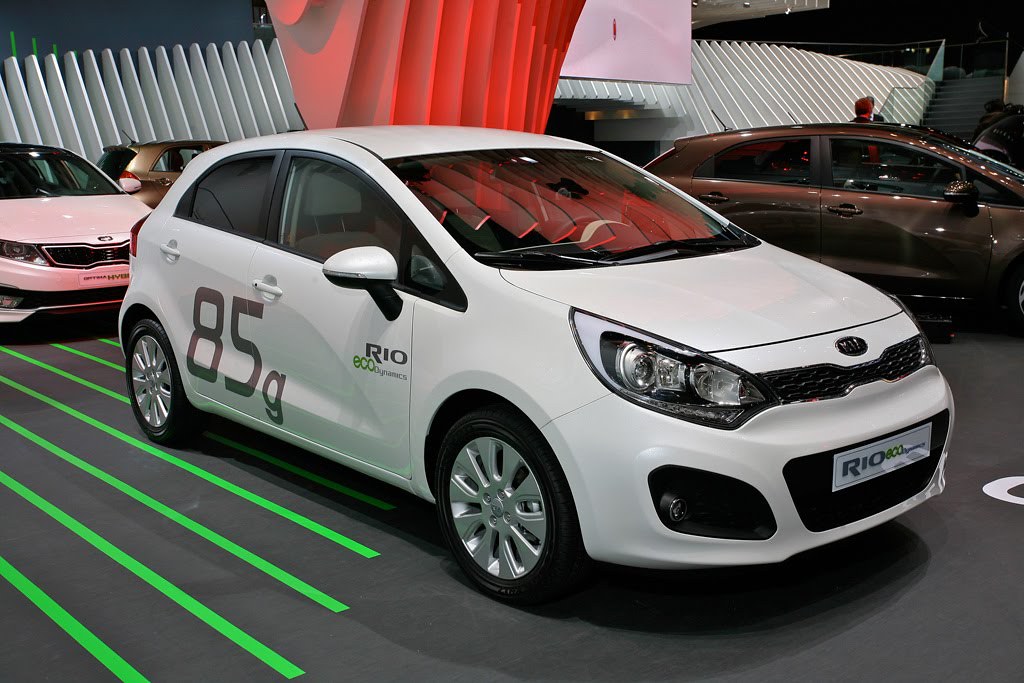
11. **Kia Rio**The Kia Rio, for many, seemed like a no-brainer: an affordable, efficient compact car perfect for zipping around town without breaking the bank. And while it was indeed known for its affordability and efficiency, much to the chagrin of numerous owners, the Rio quickly became equally known for its fair share of buyer’s remorse, proving that a low price tag doesn’t always equate to good value in the long run.
A significant chunk of that remorse stemmed directly from the vehicle’s engine issues. Owners frequently grappled with problems like “rough idling” and frustrating “misfires,” often pointing fingers at faulty spark plugs or ignition coils. These persistent engine troubles undermined the very notion of reliability that budget-conscious buyers seek, translating into unexpected repair bills.
But the disappointment wasn’t just under the hood. The Kia Rio also fell short in terms of interior quality and overall comfort. Owners consistently complained about the “cheap interior quality,” noting that materials felt flimsy and didn’t hold up well. Beyond basic material quality, the seating and ergonomics left much to be desired, and for those with practical needs, the “limited cargo room and backseat” proved to be significant frustrations, solidifying their regret.
Car Model Information: 2023 Kia Rio S
Name: Kia Rio
Caption: Fourth generation Kia Rio
Manufacturer: Kia
Aka: Kia Pride (2005–2017),Kia K2 (China; 2011–2020)
Production: November 1999 – December 2023
ModelYears: 2001–2023 (North America)
BodyStyle: hatchback
Class: Subcompact car
Layout: Front-engine, front-wheel-drive layout
Predecessor: Kia Pride,Kia Avella
Successor: Kia K3 (BL7)
Categories: 2000s cars, 2010s cars, Articles containing Korean-language text, Articles with short description, CS1 Croatian-language sources (hr)
Summary: The Kia Rio is a subcompact car manufactured by Kia from 1999 to 2023. Body styles have included a three and five-door hatchback and four-door sedan, equipped with inline-four gasoline and diesel engines, and front-wheel drive. The Rio replaced the first generation Pride—a rebadged version of the Ford Festiva—and the Avella, a subcompact sold as a Ford in some markets. A second generation was introduced in 2005 in Europe and in 2006 in North America, sharing its platform with the Hyundai Accent, a subcompact manufactured by its sister Hyundai Motor Company in South Korea. In August 2023, the K3 was introduced as its successor in several markets such as Mexico and the GCC countries.
Get more information about: Kia Rio
Buying a high-performing used car >>>
Brand: Kia Model: Rio
Price: $16,949 Mileage: 22,509 mi.
Read more about: Conquer the Open Road: 13 Hybrid Vehicles Delivering Over 600 Miles of Range for Unmatched Freedom
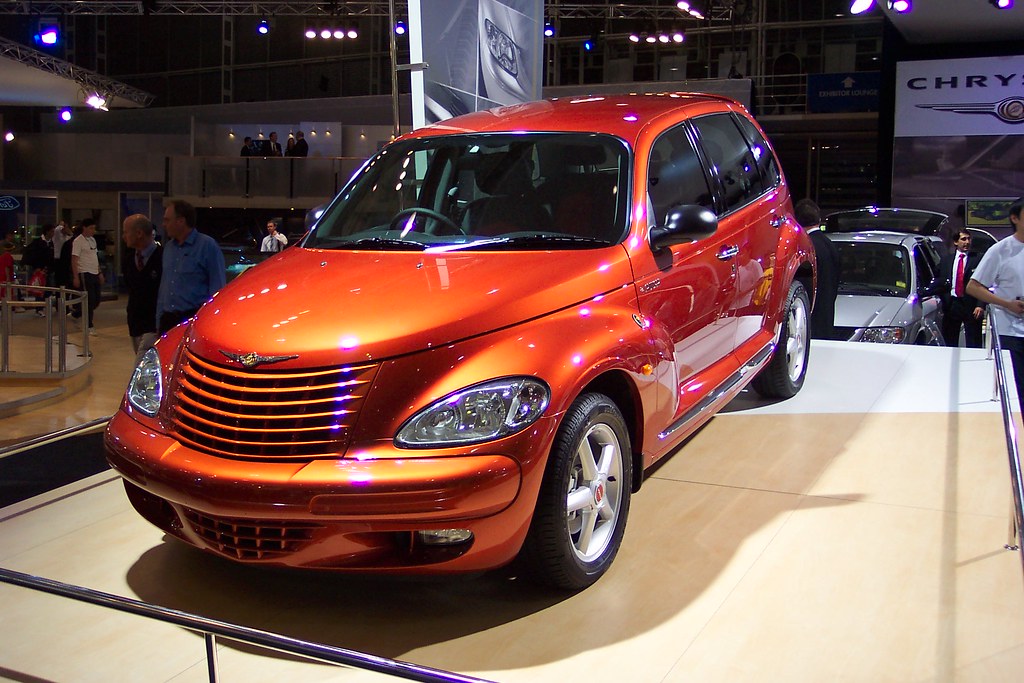
12. **Chrysler PT Cruiser**And now, for our final entry on this list of automotive regrets, we pull up to the curbside with the one, the only, Chrysler PT Cruiser. This compact car certainly holds a unique place in automotive history, mainly due to its divisive retro styling. You either loved it or you hated it – or perhaps, you just loved to hate it. But here’s the kicker: the aesthetics, polarizing as they were, were far from the only things “wrong with the vehicle.” Many owners found themselves regretting their purchase long after the initial novelty of its looks wore off.
And now, for our final entry on this list of automotive regrets, we pull up to the curbside with the one, the only, Chrysler PT Cruiser. This compact car certainly holds a unique place in automotive history, mainly due to its divisive retro styling. You either loved it or you hated it – or perhaps, you just loved to hate it. But here’s the kicker: the aesthetics, polarizing as they were, were far from the only things “wrong with the vehicle.” Many owners found themselves regretting their purchase long after the initial novelty of its looks wore off.
Beneath that distinctive exterior lay an engine that seemed determined to cause as much trouble as possible. The PT Cruiser was plagued with “engine issues galore,” including alarming “stalling” incidents, persistent “rough idling,” “overheating,” and the dreaded “head gasket failure.” As if battling a temperamental engine wasn’t enough, transmission problems were another frequent complaint, contributing to a driving experience that was anything but smooth or reliable.
In a true display of technological defiance, electrical problems frequently cropped up, causing various components to malfunction and adding to the vehicle’s reputation for unpredictable behavior. The sheer accumulation of these issues—engine, transmission, electrical, and “among other things”—left owners with a profound sense of regret. The PT Cruiser stands as a testament to the idea that charisma alone doesn’t make a good car, its numerous faults overshadowing any stylistic charm it possessed.
Car Model Information: 2022 Volkswagen Atlas 2.0T SE
Name: Chrysler PT Cruiser
Manufacturer: Chrysler
ModelCode: PT,PG
Production: 2000–2010
ModelYears: 2001–2010
Assembly: Toluca, Mexico State
Designer: Bryan Nesbitt
Class: Compact car
BodyStyle: convertible
Platform: Chrysler PT platform
Related: Dodge SRT4,Dodge Neon
Predecessor: Dodge Neon
Successor: Lancia Delta#Third generation
Layout: Front-engine, front-wheel-drive layout
Engine: ubl
Transmission: Ultradrive#40TE
Wheelbase: 103 in
Abbr: on
Length: 168.8 in
Width: 67.1 in
Height: 63 in
Weight: 3123 lb
Categories: 2010s cars, All articles with unsourced statements, Articles with short description, Articles with unsourced statements from March 2018, Cars discontinued in 2010
Summary: The Chrysler PT Cruiser is a compact car that was built by the American company Chrysler from 2001 until 2010. Introduced as a five-door hatchback wagon, a two-door convertible variant was also made from 2005 until 2008.
Originally planned as a Plymouth model, the PT Cruiser was ultimately marketed as a Chrysler when Plymouth was discontinued. Intended to invoke 1930s aesthetics, the exterior of the PT Cruiser was designed by Bryan Nesbitt. The model received an intermediate facelift for the 2006 model year. Interior packaging was noted for its high roof, high h-point seating, and flexible cargo and passenger configurations enabled by a multi-level rear cargo shelf and rear seats a user could fold, tumble, or remove.
The PT Cruiser was produced in Mexico and Austria at the Toluca Car Assembly and Eurostar Automobilwerk factories respectively. By the end of production in July 2010, worldwide production had reached 1.35 million.
In its nameplate, PT stands for “Personal Transport” or “Personal Transportation”. PT was the PT Cruiser’s product code for the Mexican-made units.
Get more information about: Chrysler PT Cruiser
Buying a high-performing used car >>>
Brand: Chrysler Model: PT Cruiser
Price: $21,999 Mileage: 44,961 mi.
Read more about: Conquer the Open Road: 13 Hybrid Vehicles Delivering Over 600 Miles of Range for Unmatched Freedom
So there you have it, a candid look at 12 cars that, for various reasons, have left their owners with a serious case of buyer’s remorse. From frustrating transmission failures and persistent engine woes to uncomfortable interiors and unexpected repair bills, these vehicles often promised more than they delivered. The lesson here is crystal clear: don’t let flashy looks or a tempting price tag blind you to potential headaches down the road. Learning from others’ missteps is one of the smartest moves you can make before signing on that dotted line. Because at the end of the day, your car should be a source of joy, not a constant reminder of a costly mistake. Drive smart, and choose wisely!

